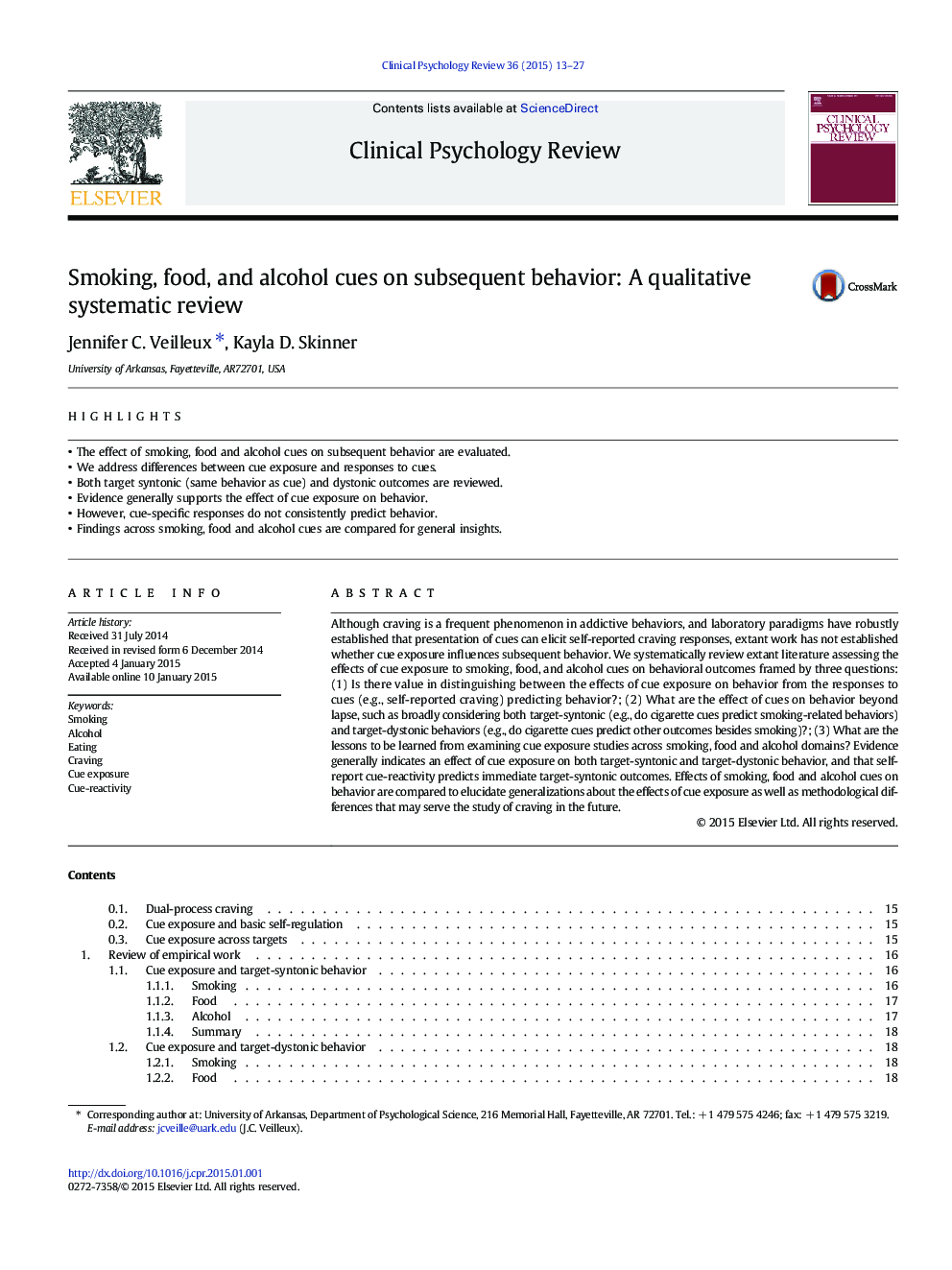| کد مقاله | کد نشریه | سال انتشار | مقاله انگلیسی | نسخه تمام متن |
|---|---|---|---|---|
| 903595 | 1472855 | 2015 | 15 صفحه PDF | دانلود رایگان |
• The effect of smoking, food and alcohol cues on subsequent behavior are evaluated.
• We address differences between cue exposure and responses to cues.
• Both target syntonic (same behavior as cue) and dystonic outcomes are reviewed.
• Evidence generally supports the effect of cue exposure on behavior.
• However, cue-specific responses do not consistently predict behavior.
• Findings across smoking, food and alcohol cues are compared for general insights.
Although craving is a frequent phenomenon in addictive behaviors, and laboratory paradigms have robustly established that presentation of cues can elicit self-reported craving responses, extant work has not established whether cue exposure influences subsequent behavior. We systematically review extant literature assessing the effects of cue exposure to smoking, food, and alcohol cues on behavioral outcomes framed by three questions: (1) Is there value in distinguishing between the effects of cue exposure on behavior from the responses to cues (e.g., self-reported craving) predicting behavior?; (2) What are the effect of cues on behavior beyond lapse, such as broadly considering both target-syntonic (e.g., do cigarette cues predict smoking-related behaviors) and target-dystonic behaviors (e.g., do cigarette cues predict other outcomes besides smoking)?; (3) What are the lessons to be learned from examining cue exposure studies across smoking, food and alcohol domains? Evidence generally indicates an effect of cue exposure on both target-syntonic and target-dystonic behavior, and that self-report cue-reactivity predicts immediate target-syntonic outcomes. Effects of smoking, food and alcohol cues on behavior are compared to elucidate generalizations about the effects of cue exposure as well as methodological differences that may serve the study of craving in the future.
Journal: Clinical Psychology Review - Volume 36, March 2015, Pages 13–27
